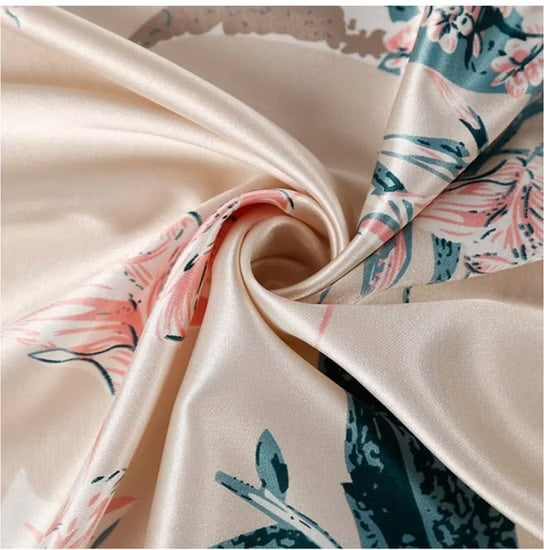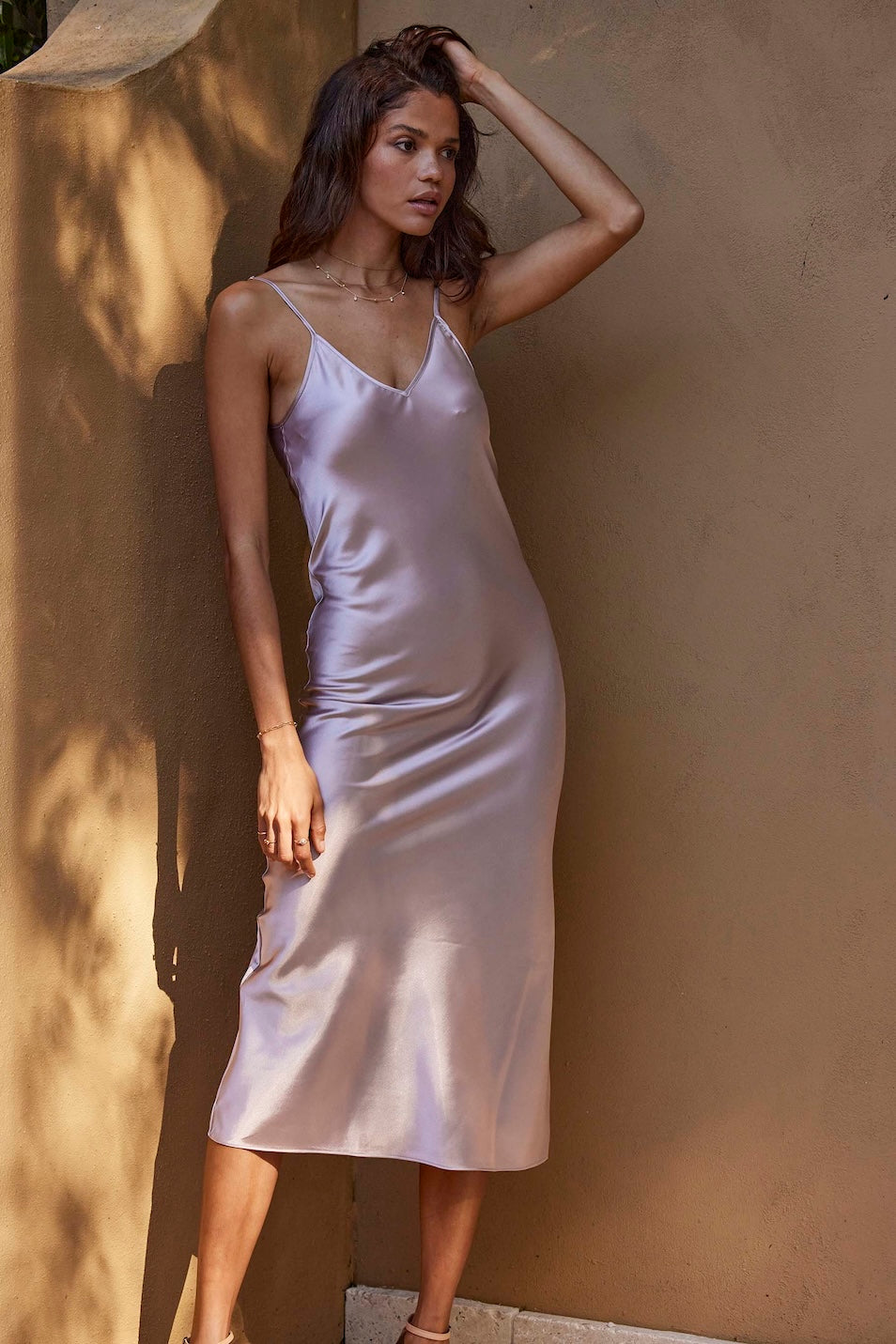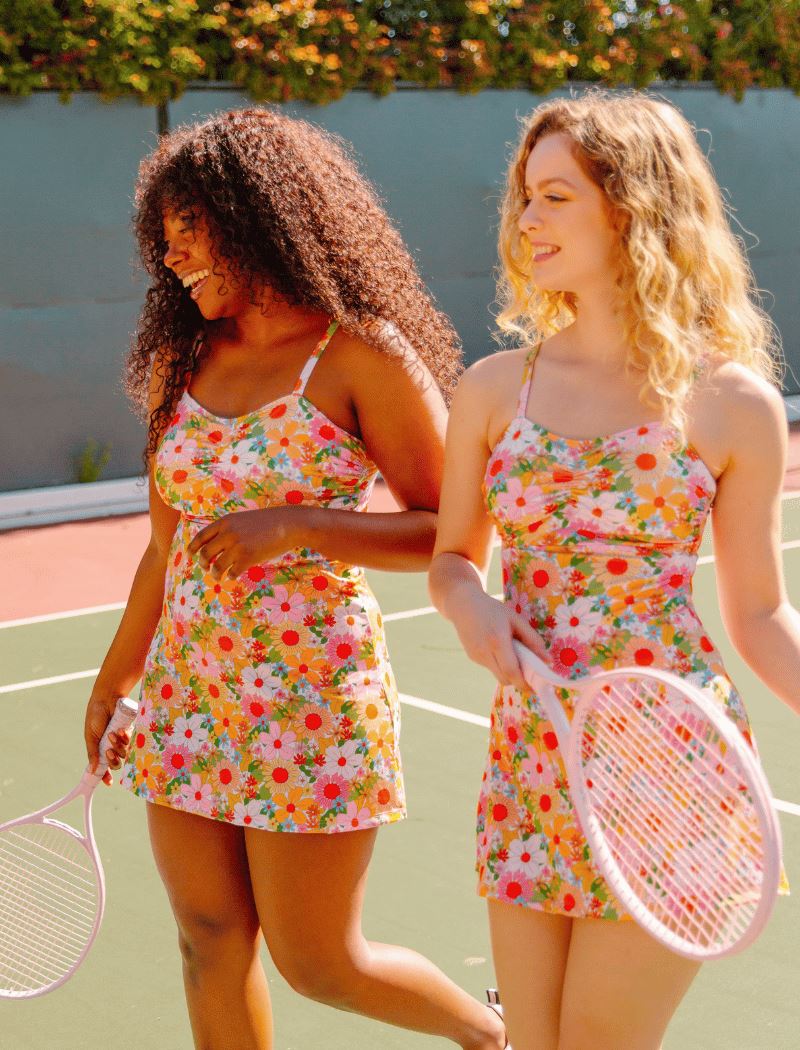What Is Silk? The Timeless Fabric of Luxury

Silk is one of the most revered and luxurious textiles in the world, celebrated for its unparalleled softness, natural sheen, and rich history. Originating from the cocoon of the silkworm, this fabric has been treasured for thousands of years, symbolizing elegance, wealth, and refinement. The delicate, lightweight qualities of silk make it feel as if one is walking on air, giving it an ethereal appearance that enhances its allure.
From ancient China to contemporary fashion runways, silks have captivated designers and consumers alike with their versatility, deep, rich colors and textures, and enduring appeal. Today, silks are available in many different colors and styles, offering a wide range of options for every aesthetic.
The Origins of Silk
The process of silk production begins with silkworm eggs, which are carefully nurtured until they hatch into larvae. These larvae feed on mulberry leaves and eventually spin silkworm cocoons using a continuous filament of silk fiber, which can stretch up to a mile long. The fiber is harvested from the silkworm cocoons, treated, and then twisted and processed to form threads. These threads are woven on a loom to create fabric, resulting in a material that is both lightweight and incredibly strong.
The history of silk dates back over 4,000 years to ancient China, where its discovery and production were closely guarded secrets for centuries. Silk is created through a careful process that transforms eggs into silkworm cocoons and then into fine threads. Legend credits Empress Leizu with discovering silk when a silkworm cocoon fell into her tea, unraveling into a fine, lustrous thread. From there, silk became an integral part of Chinese culture, eventually spreading to other parts of the world through the famed Silk Road.
Characteristics of Silk Fabric
Silk is prized for its unique combination of properties:
-
Luster: The triangular molecular structure of silk allows it to refract light, giving the fabric its signature sheen.
-
Softness: Silk’s smooth surface makes it gentle on the skin, reducing irritation and friction.
-
Strength: Despite its delicate appearance, silk is incredibly strong for a natural fiber.
-
Breathability: Silk regulates temperature, keeping you cool in summer and warm in winter. It conforms comfortably to the body, providing a natural feel and excellent temperature regulation.
-
Drape: Silk has an elegant, fluid drape that enhances the luxurious appearance and versatility of garments and home décor.
-
Lining: The soft and breathable qualities of silk make it an ideal choice for lining in high-end clothing, adding comfort and elegance.
-
Hypoallergenic: Silk resists dust mites, mold, and other allergens, making it ideal for sensitive skin.
How Silk Production Is Done
The production of silk, known as sericulture, is a meticulous process:
-
Cultivating Silkworms: Silkworms are fed a diet of mulberry leaves to ensure the production of high-quality silk.
-
Harvesting Cocoons: After spinning their cocoons, the silkworms are carefully harvested.
-
Reeling the Silk: The cocoons are soaked in hot water to loosen the fibers, which are then unwound into a single continuous silk thread.
-
Spinning and Weaving: The silk threads are spun into yarn and woven into fabric. After weaving, the fabric often undergoes a dyeing process, as silk readily absorbs dyes to produce vibrant, long-lasting colors.
It takes approximately 2,500 silkworms to produce one pound of raw silk, highlighting the labor-intensive nature of silk production. Silk is also prized for painting, as its smooth surface allows for artistic expression and decorative beauty.
Types of Silk
Silk comes in many styles, each with unique qualities that cater to diverse applications and preferences:
-
Mulberry Silk: The most common and luxurious type, derived from Bombyx mori silkworms fed exclusively on mulberry leaves.
-
Tussar Silk: A wild silk known for its rich texture and natural gold tones, often produced in India.
-
Eri Silk: A sustainable silk produced without killing the silkworm, making it an ethical choice.
-
Muga Silk: Exclusive to India, Muga silk is known for its durability and shimmering quality.
-
Spider Silk: An experimental and rare type of silk harvested from spiders, noted for its exceptional strength and elasticity.
-
Silk Satin: Renowned for its luxurious texture and high sheen, silk satin is a popular choice in fashion and textiles for its smooth, glossy surface.
Compared to other fabrics, silk stands out for its natural luster, breathability, and eco-friendly production, offering unique advantages in both style and sustainability.
Applications of Silk
Silk is a versatile fabric used across various industries:
-
Fashion: From elegant evening gowns to tailored ties, silk is a staple in high-end fashion. It is highly prized for luxurious clothing and garments such as dresses, shirts, and lingerie due to its softness and breathability. Compared to cotton, which is also a natural, breathable, and versatile material often used in sustainable fashion, silk offers a unique sheen and smooth texture. Silk-cotton blends are popular for combining the best qualities of both fibers in premium garments.
-
Home Textiles: Silk sheets, pillowcases, and drapes add a touch of luxury to interiors.
-
Beauty: Silk pillowcases are favored for their skin and hair benefits, reducing friction and preventing wrinkles.
-
Industrial Uses: Silk’s strength and elasticity make it valuable in medical sutures, parachutes, and even advanced technology.
Care and Maintenance of Silk
Silk fabric is renowned for its soft texture and natural sheen, but these luxurious qualities require thoughtful care to preserve. When caring for silk garments, always opt for gentle handling to protect the delicate silk fibers. Hand washing in cold water with a mild detergent is ideal, as harsh chemicals or bleach can strip away the fabric’s luster and weaken its structure. Avoid wringing or twisting silk garments, as this can distort the cloth and damage the fine fibers, gently press out excess water instead.
To dry silk fabrics, lay them flat on a clean towel, away from direct sunlight, which can fade colors and dull the natural sheen. If ironing is necessary, use the lowest temperature setting and place a protective cloth between the iron and the silk to prevent scorching or shine marks. With regular, gentle maintenance, silk fabrics retain their signature softness and elegant texture, ensuring your silk garments remain beautiful and comfortable for years to come.
The Environmental Impact and Sustainability of Silk
For several reasons, sustainability is a key concern in silk production. While silk is a natural and biodegradable material, traditional silk production can raise ethical and environmental concerns. The killing of silkworms during the harvesting process has led to the rise of alternative methods, such as:
-
Peace Silk (Ahimsa Silk): Harvested without harming the silkworms, allowing them to complete their life cycle.
-
Plant-Based Alternatives: Innovations in fabric technology are creating silk-like materials from soy, banana fibers, and other plants.
When purchasing silk, look for certifications like Global Organic Textile Standard (GOTS) to ensure ethical and sustainable practices.
Ultimately, choosing sustainable silk over other fabrics helps support ethical production and preserves the lasting value of this remarkable material.
Buying Sustainable Silk Fabrics
As awareness of environmental impact grows, many consumers are seeking silk fabrics produced through more sustainable methods. Sustainable silk production often begins with responsible sericulture, where the health of silkworms and the cultivation of mulberry trees are carefully managed to minimize harm to the environment. Choosing silk fabrics that are certified organic or fair trade ensures that the production process meets high standards for both environmental stewardship and social responsibility.
Look for suppliers who prioritize recycling and up cycling, transforming surplus or dead stock silk materials into new, elegant fabrics. This approach reduces waste and lessens the demand for new raw materials, making silk production more eco-friendly. Companies like Recovo are leading the way by offering a curated selection of sustainable silk fabrics, allowing you to enjoy the timeless elegance of silk while supporting responsible production practices. By making mindful choices, you can embrace the beauty of silk and contribute to a more sustainable future for textiles.
Why Silk Remains Timeless
Silk’s allure lies in its perfect balance of luxury and practicality. Its unique properties and rich history make it a fabric like no other, transcending trends and time. From its role as a status symbol in ancient China to its continued presence in modern luxury, silk has maintained its status as a textile masterpiece.
Even during periods of scarcity, such as World War II when silk shortages affected global supply, silk remained highly valued and sought after.
Whether it’s a flowing silk dress, a luxurious scarf, or a set of satin-like bed linens, silk remains an unparalleled choice for those who value beauty, comfort, and sophistication.
Invest in silk, and you’re not just buying fabric, you’re embracing a legacy of elegance that has endured for millennia.


